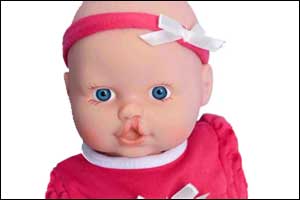- Home
- Editorial
- News
- Practice Guidelines
- Anesthesiology Guidelines
- Cancer Guidelines
- Cardiac Sciences Guidelines
- Critical Care Guidelines
- Dentistry Guidelines
- Dermatology Guidelines
- Diabetes and Endo Guidelines
- Diagnostics Guidelines
- ENT Guidelines
- Featured Practice Guidelines
- Gastroenterology Guidelines
- Geriatrics Guidelines
- Medicine Guidelines
- Nephrology Guidelines
- Neurosciences Guidelines
- Obs and Gynae Guidelines
- Ophthalmology Guidelines
- Orthopaedics Guidelines
- Paediatrics Guidelines
- Psychiatry Guidelines
- Pulmonology Guidelines
- Radiology Guidelines
- Surgery Guidelines
- Urology Guidelines
Breakthrough in cleft lip and palate research

Researchers from UNSW Sydney and the University of Washington have identified four genes that work together to cause cleft lip and palate. The study published in the American Journal of Human Genetics provides the first evidence that a significant number of non-syndromic clefts have a single gene basis and not a complex basis as previously thought.
The genes, associated for the first time with cleft lip and palate, encode proteins that work together in a network, providing important insights into the biological basis of one of the most common physical malformations.
Representing about 70 percent of cleft lip and palate cases worldwide, non-syndromic cleft lip and palate typically occur in isolation without other physical abnormalities. This craniofacial malformation has long been considered to be caused by a combination of many common genetic variants and environmental factors, each contributing a small amount to the risk of a child being born with a cleft. Using next-generation sequencing, the research team identified variants in four new genes, each representing a primary cause of non-syndromic cleft lip and palate. These genes are known to encode proteins that work together in a network, providing important insight into the biological basis of the cleft lip and palate.
Associate Professor Tony Roscioli, a specialist in clinical genetics, said that cleft lip/palate is one of the most common human malformations, occurring in one in 800 children.
“That equates to about 250 Australian children each year and one affected child born every three minutes worldwide,” said Associate Professor Roscioli. He added, “What we were seeking to identify in this study was whether single genes could cause a cleft lip or palate in families where there were multiple affected people. Knowing the genes and the way these impact lip and palate formation opens the door for further research to understand how these genes work and to develop treatments.”
Commenting on their breakthrough, Professor Timothy Cox, in the Department of Paediatrics, said that prior studies had focused on using large numbers of affected individuals without an obvious family history, searching for common genetic variants that are associated with an increased risk of a child being born with a cleft.
"We reasoned that non-syndromic cleft lip and palate occurring in families is more likely to be caused by a single rare variant that we can pinpoint using available new sequencing technologies," said Professor Cox. He added, "The genetic pathway that emerged from these data gathered through collaboration with clinical teams from around the world is arguably one of the most significant advances in cleft lip and palate genetics in the last 15 years."
Cleft lip and cleft palates are repaired with corrective surgery. Future research will further investigate the biology and link the findings to future potential therapies. These discoveries will allow geneticists to provide more accurate information to families.
For more reference log on to https://doi.org/10.1016/j.ajhg.2018.04.009

Disclaimer: This site is primarily intended for healthcare professionals. Any content/information on this website does not replace the advice of medical and/or health professionals and should not be construed as medical/diagnostic advice/endorsement or prescription. Use of this site is subject to our terms of use, privacy policy, advertisement policy. © 2020 Minerva Medical Treatment Pvt Ltd